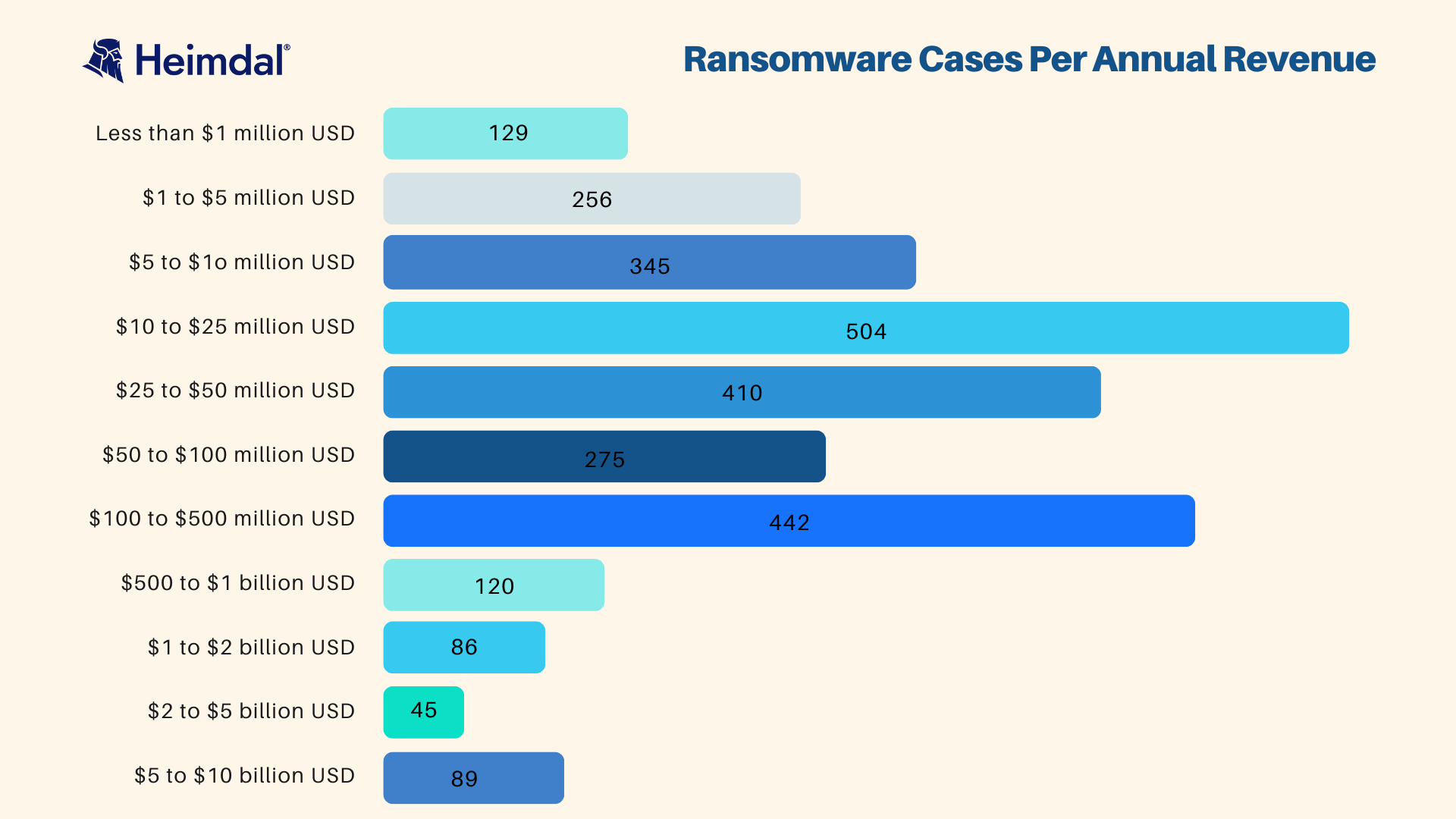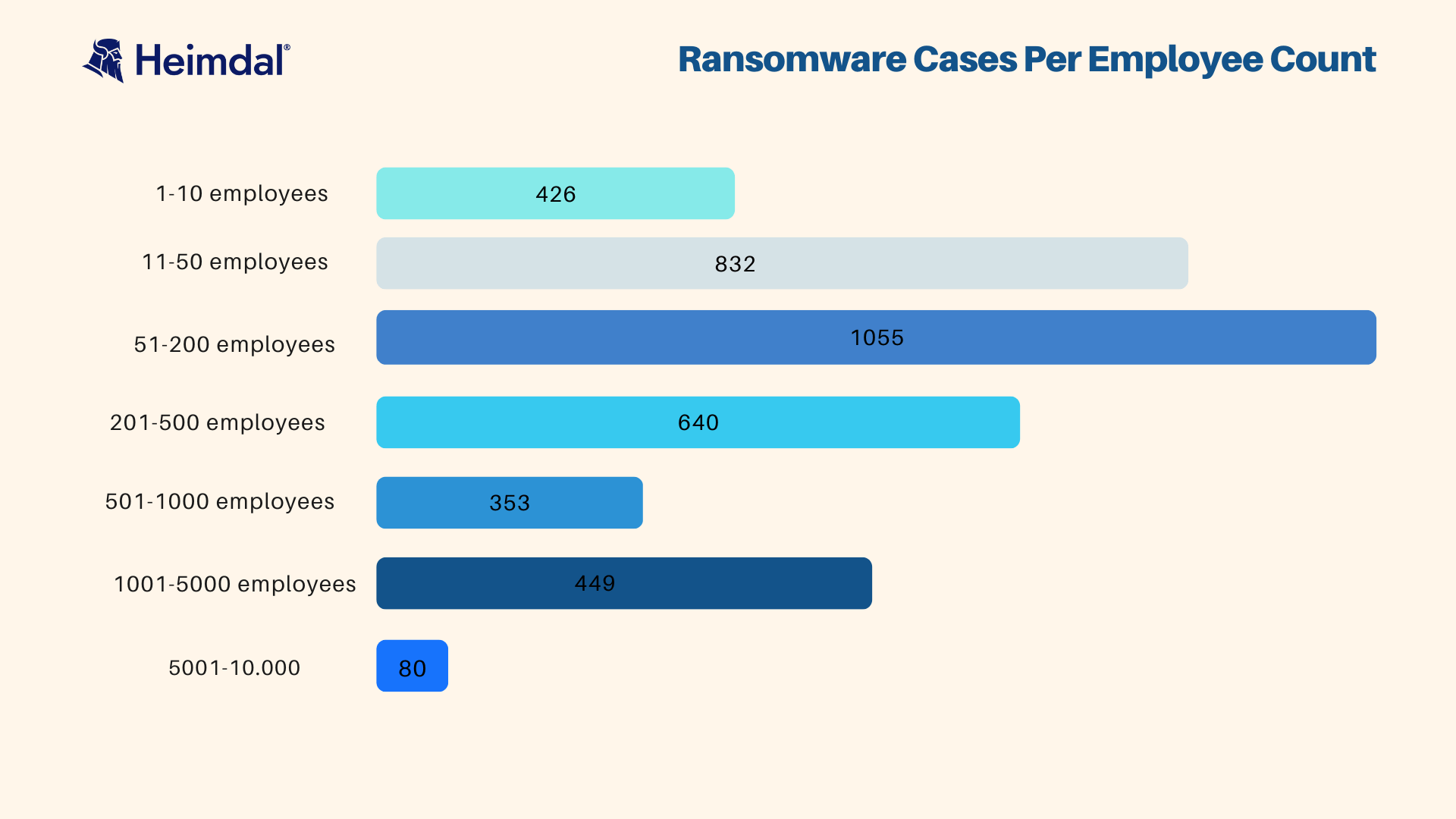Contents:
In an increasingly digital world, the threat of ransomware looms large over organizations of all sizes. However, the impact of ransomware attacks can vary significantly depending on the size of the targeted firm.
This article delves into the effects of firm size on ransomware threats, examining how different sizes of organizations experience distinct impacts when facing these cyber threats. We’ll also explore whether smaller businesses are targeted less due to limited resources.
The Landscape of Ransomware Attacks
Before delving into the role of firm size in ransomware threats, it’s essential to understand the current landscape of ransomware attacks.
Ransomware is malicious software that encrypts an organization’s data, making it inaccessible until a ransom is paid to the attacker.
These attacks have become increasingly sophisticated, with cybercriminals targeting various industries, from healthcare and finance to government agencies and educational institutions.
Ransomware affects companies from a wide range of industries. However, the most frequently targeted ones have vital roles in supply chains or manage extensive customer data. These forces put enormous pressure on businesses to pay the ransom and continue operations.
For example, research shows that the most targeted industries by ransomware attacks are the following:
- Legal 92%
- Financial Services 78%
- Manufacturing 78%
- Human Resources 77%
- Healthcare 74%
- Government 68%
- Education 63% (Source)
Several factors contribute to why some industries are more targeted by ransomware attacks than others. Here are a few key reasons:
Financial motivation
Ransomware threats are primarily financially motivated. Attackers target industries more likely to pay ransoms to regain control of their critical systems and data quickly. Industries that rely heavily on uninterrupted access to their data, such as finance, healthcare, and legal sectors, are more likely to pay to avoid disruptions and potential legal consequences.
Value of data
Industries with valuable and sensitive data, such as personally identifiable information (PII), trade secrets, intellectual property, or financial records, are attractive targets for ransomware attacks. Cybercriminals know that compromising and encrypting such data can significantly impact the targeted organization, giving them leverage to demand high ransom amounts.
Critical infrastructure
Industries that operate vital infrastructure systems, including energy, transportation, and telecommunications, are frequently targeted. Disrupting these sectors can cause widespread chaos and economic damage and potentially endanger lives. Attackers exploit vulnerabilities in the infrastructure to extort ransom payments or disrupt services for financial or ideological reasons.
Poor cybersecurity practices
Industries with inadequate cybersecurity measures or outdated systems are more susceptible to ransomware attacks. Legacy systems, unpatched software, weak passwords, and insufficient employee training create vulnerabilities that attackers can exploit. Industries that need to be faster to invest in cybersecurity or prioritize it less frequently become prime targets.
Third-party dependencies
Some industries rely heavily on third-party service providers, vendors, or supply chains. Attackers often exploit weak security practices in these interconnected networks to gain unauthorized access to targeted industries. A successful breach in one organization can provide attackers with a foothold to propagate ransomware to other entities in the supply chain.
The human factor
Social engineering techniques, such as phishing emails or targeted spear-phishing attacks, are common entry points for ransomware. Industries with a large workforce, including employees who may be less security aware or have varying technical expertise, are more prone to falling victim to these tactics. Industries such as education, retail, or hospitality, with a diverse range of employees, may be targeted due to the potential for human error.
Now, let’s see whether or not smaller businesses are targeted less because they have fewer resources to please the cyber attackers. Or perhaps more? As the below analysis demonstrates, it is neither.
Small Businesses: Less Targeted or Easy Prey?
One common misconception is that smaller businesses are less likely to be targeted by ransomware threats because they lack larger enterprises’ vast resources and financial reserves.
While it is true that some cybercriminals seek out high-value targets for larger ransom payouts, smaller businesses are far from immune to these threats.
Smaller organizations often have less robust cybersecurity measures due to budget constraints, making them attractive targets for cybercriminals.
Attackers may view smaller businesses as easier prey, assuming they are less likely to have solid defenses and backup systems. Consequently, small businesses can be just as vulnerable to ransomware attacks as their larger counterparts.
While the fewest ransomware attacks were recorded against organizations worth between $5 and $10 billion, companies earning over $10 billion had twice as many occurrences. (Source)
Furthermore, organizations with less than $1 million in revenue and those with $500 million to $1 billion were targeted at a similar rate.
According to the summary, small and medium-sized businesses with 11 to 50 employees and those with 51 to 200 employees had the most attacks. One-person operations suffered the least.
Below you’ll see some illustrations of the number of ransomware cases per revenue and employee count reported annually in the United States:


Larger Firms: Bigger Stakes and Bigger Payoffs
Larger organizations typically have more financial resources, making them appealing targets for cybercriminals looking for larger ransom payouts.
Moreover, they often possess vast amounts of valuable data that can disrupt critical operations if encrypted. As a result, larger firms may experience more frequent and sophisticated ransomware attacks.
However, larger firms also invest more in cybersecurity measures, have dedicated IT teams, and implement comprehensive backup and recovery plans. These measures can make it more challenging for ransomware attackers to succeed, but when they do breach their defenses, the impact can be severe due to the scale of the organization.
Unique Vulnerabilities
Both small and large organizations have their unique vulnerabilities when it comes to ransomware threats. Smaller businesses may lack the financial means to invest in top-tier cybersecurity solutions, exposing them to attacks.
Larger enterprises, on the other hand, may struggle with complexity and bureaucracy, which can slow down incident response and decision-making during a ransomware attack.
Furthermore, the motivation behind ransomware attacks can vary.
While some attackers primarily seek financial gain, others may be motivated by political or ideological reasons. In such cases, the organization’s size may be less relevant, and the attack may occur regardless of firm size.
Conclusion
In the realm of ransomware threats, the size of an organization does influence the nature of the attack. Still, it does not guarantee immunity for smaller businesses or guaranteed targeting for larger ones.
Smaller businesses may be perceived as easier targets due to their limited resources, while larger organizations may attract attackers looking for bigger payoffs. However, the effectiveness of an attack depends on various factors, including the organization’s cybersecurity posture, backup and recovery capabilities, and the attackers’ motivation.
In today’s interconnected world, all organizations, regardless of size, must prioritize cybersecurity to mitigate the risks associated with ransomware attacks.
Investing in robust security measures, employee training, and disaster recovery plans is essential for protecting against the ever-evolving threat landscape, ensuring business continuity, and safeguarding sensitive data.
Ultimately, the impact of ransomware attacks extends beyond the size of the firm, affecting operations, customer trust, and the broader cybersecurity ecosystem.
How Can Heimdal® Protect You Against Ransomware Attacks?
Heimdal’s exclusive Ransomware Encryption Protection technology was designed to thwart even the most sophisticated ransomware attacks in the cloud and on-premises, preventing and protecting rather than mitigating.
Here’s a quick rundown of what Ransomware Encryption Protection can do for your business:
- Prevent data breaches by protecting your networks and endpoints against fraudulent encryption attempts;
- Eliminate downtimes caused by ransomware attacks;
- Reduce and eliminate post-ransomware impacts;
- Improve the detection capabilities of your current cybersecurity software;
- Increase conformity;
- Get comprehensive defense against zero-day vulnerabilities;
- Combine with any SIEM for improved detection of policy violations.
Ready to take it for a spin? Click here for a personalized demo.

Heimdal™ Ransomware Encryption Protection
- Blocks any unauthorized encryption attempts;
- Detects ransomware regardless of signature;
- Universal compatibility with any cybersecurity solution;
- Full audit trail with stunning graphics;
If you liked this article, follow us on LinkedIn, Twitter, Facebook, and YouTube, for more cybersecurity news and topics.


 Network Security
Network Security
 Vulnerability Management
Vulnerability Management
 Privileged Access Management
Privileged Access Management
 Endpoint Security
Endpoint Security
 Threat Hunting
Threat Hunting
 Unified Endpoint Management
Unified Endpoint Management
 Email & Collaboration Security
Email & Collaboration Security










